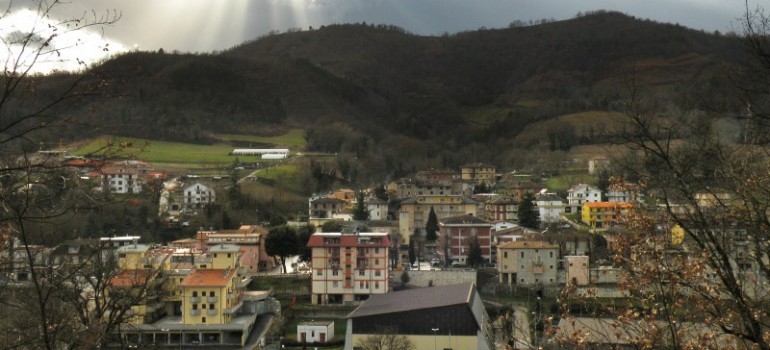
The town which we currently know as Roccafluvione was fonded in 1863. Its inhabited area originates near the old castel of Rocca di Casaregnano, which was joined by the castels of Osoli and Rocca Reonile in 1866. The place-name derives from the nearby Fluvione Torrent. Its vast territory includes thirty-one separate hamlets. The landscape ( whose altitude shifts from 216 to 1050 metres) is varied. From the flat valley, where the administrative centre of Marsia ( whose name possibly derives from the marsi people) developed, one can reach the heights of a hill and mountain setting. Roccafluvione has two valuable Romanesque churches as evident signs of the civilization brought by the Benedictine monks, to whom the history of the place is strictly linked. The parish church is an interesting stop on the itinerary. It is dedicated to St.Stefano di Protomartire (XII century) of Benedictine origin. It has an imposing apse facade and its crypt, discovered in 1934, is divided into three naves by pilaters having massive sculpted capitals. Less famous but nonetheless worth considering is the parish Church of St. Ippolito and Cassiano from Pedara (12th century), characterized by a massive belfry built to defend the Fluvione banks. Worth visiting, in a uncontaminated and luxuriant setting by the hamlet of Casacagnano is the Natural bridge “Ponte Nativo”, its shows the whims of nature as tied to creativity of mankind. Two arenaceous rocks whick have slid down the two opposite banks of the Fluvione form a natural bridge. The streams Fluvione and Storre give life to two beautiful waterfalls: Arena and Forcella. At Roccafluvione there are the remains of many old water mills.
Immagine in diretta aggiornata ogni 30 secondi.
La presente webcam non effettua alcuna registrazione video. Non ha funzioni di videosorveglianza e non conserva alcun dato personale. Ogni nuova fotografia sovrascrive quella precedente con refresh automatico, molto similmente ad una macchina fotografica che scatta le foto senza immagazzinarle in memoria. E’ possibile salvare le fotografie cliccando con il tasto destro del mouse sull’immagine e poi alla voce “Salva immagine con nome”. L’immagine è regolata per non recare disturbo alla privacy del vicinato dei passanti e ha l’unico scopo di diffondere in tempo reale le immagini provenienti territorio.